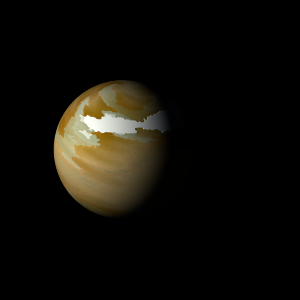|
|
Space Astro
|
Info for exoplanet "Pyabi"
| Scientific (actual) data |
|---|
| Name | Kepler-886 b |
| Planet status | Confirmed |
| Radius | 0.136 |
| Orbital period | 6.24146 |
| Discovered | 2016 |
| Updated | 2021-02-05 |
| Tconj | 2454970 |
| Publication | Announced on a website |
| Detection type | Primary Transit |
| Alternate names | 2MASS J19050521+4335428 b, K01533.01, KIC 7808587 b, KOI-1533 b, KOI-1533.01, WISE J190505.21+433542.7 b |
| Star name | Kepler-886 |
| Right ascension | 286.27° |
| Declination | 43.6° |
| Mag j | 12.903 |
| Mag h | 12.601 |
| Mag k | 12.565 |
| Star distance | 857 |
| Star metallicity | -0.01 |
| Star mass | 1.1 |
| Star radius | 1.16 |
| Star age | 3.39 |
| Star temperature | 6098 |
| Star alternate names | 2MASS J19050521+4335428, KIC 7808587, KOI-1533, WISE J190505.21+433542.7 |
| Wikipedia article | Kepler-886 b |
Back
| |
| Fictional info (?) |
|---|
| Suggested name | Pyabi |
| Planet type | Cold planet |
| .
Its north and south poles, therefore, lie where most other planets have their equators. |
| Atmosphere | Hydrogen chloride | 93% |
| Oxygen | 6.4% |
| Nitrogen | 0.003% |
| Atmospheric pressure | 0.001 bar |
 |
| No known satellites |
| Google search for Pyabi |
|
Website by Joachim Michaelis
|
|
|
|